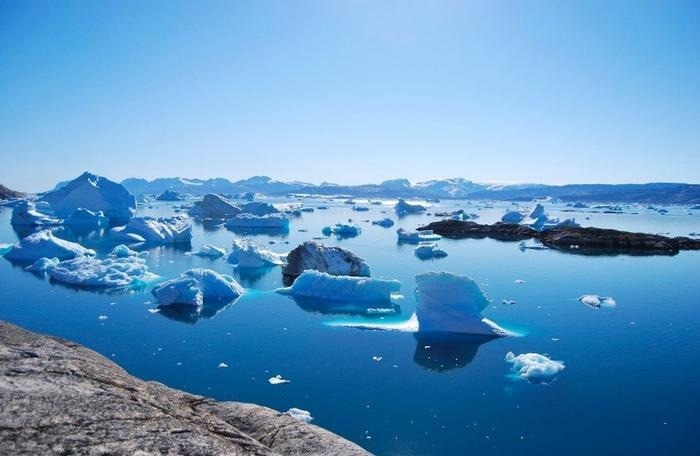One of the most important winter climate system change patterns in the mid-high latitudes of the Northern Hemisphere is the “warm Arctic-cold Eurasia” pattern. This large-scale pattern experienced a huge and intense sub-seasonal reversal between early and late winter in winter 2020/21.
 The Arctic warming and sea ice melting. Image Credit: Jean-Christophe Andre
The Arctic warming and sea ice melting. Image Credit: Jean-Christophe Andre
The Barents-Kara Sea sea-ice anomalies also transformed from just being significantly negative in early winter to positive in late winter at the same time. The quick freezing or melting of sea ice in winter deserves consideration for the slow-varying process of winter sea ice.
Professor Zhicong Yin’s group at Nanjing University of Information Science and Technology has discovered a strong relationship and key mechanism for the sub-seasonal variation of Barents-Kara sea-ice anomalies in winter and the “warm Arctic-cold Eurasia” pattern.
A more detailed schematic of the sub-seasonal reversal of the air-ice system in the Arctic-Eurasia region was also depicted, all of which led to an improved understanding and predictability of extreme climate at mid-low latitudes.
WACE (the “warm Arctic-cold Eurasia” pattern) is a phenomenon in which the large-scale temperature gradient deteriorates, causing atmospheric baroclinicity to acclimate. A sub-seasonal transition of the sea-ice anomaly happens in the BKS (Barents-Kara Sea) as a result of such exceptional high-latitude atmospheric pattern reversals.
Abnormal downward turbulent heat flux and enhanced downward infrared radiation in the BKS are suitable for sea ice melting in the warm Arctic and improved Ural high. The surface southerly wind causes sea ice to drift from thin to perennial ice areas, thereby expanding the open ocean surface. In the opposite phase of WACE, the opposite mechanism occurs, resulting in positive BKS sea-ice anomalies.
When WACE reverses on a sub-seasonal scale, the aforementioned mechanisms take place in early and late winter, resulting in a substantial sub-seasonal transition of BKS sea-ice anomalies.
More notably, with more prevalent WACE reversals in the last decade, the sub-seasonal transition between early winter and late winter in BKS sea ice has improved. The WACE and BKS sea ice trends are consistent and correlate to the intensity of sub-seasonal variation.
The “Arctic warming-Eurasian cooling” trend changes and Arctic sea ice are still ambiguous in the context of global warming, and their prediction is extremely difficult. Further research is needed to determine whether sub-seasonal variation in BKS sea ice will remain as strong as it has been in recent years under various warming scenarios, revealing the contribution of global warming to extreme events.
Journal Reference:
Zhang, Y., et al. (2023). Subseasonal transition of Barents–Kara sea-ice anomalies in winter related to the reversed warm Arctic–cold Eurasia pattern. Atmospheric and Oceanic Science Letters. doi.org/10.1016/j.aosl.2023.100392.